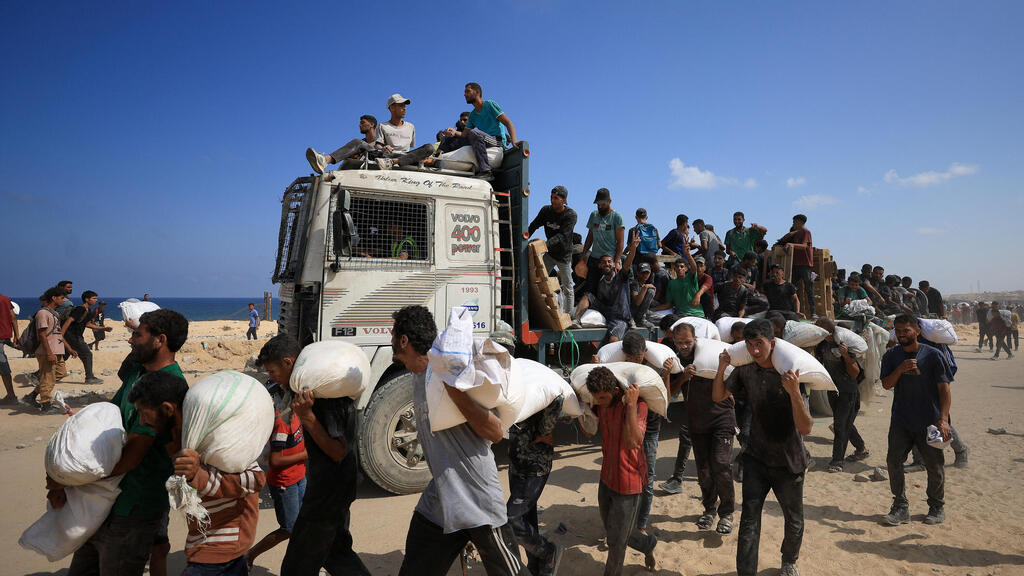A report by the Integrated Food Security Phase Classification (IPC), the main global hunger monitor, is due on Friday. An interim statement it released in late July said famine was “playing out” in Gaza.
Food being served across Gaza
(Video: COGAT)
After a global outcry at Israel’s alleged severe restrictions on aid from March, its military began allowing more food into Gaza in late July. But volumes are too small and distribution too chaotic to stop more people becoming malnourished, while those who are already starving are not getting life-saving supplements, according to hunger experts and aid workers.
“We are seeing the worst possible humanitarian catastrophe that we can even measure,” said Jeanette Bailey, a child nutrition lead at the International Rescue Committee. There are “going to be a lot more children dying, a lot more pregnant and lactating women suffering from malnutrition.”
Some of the most malnourished children are in the few hospitals still operating. At Rantisi Hospital in Gaza City, doctor Ahmed Basal held up an infant, arms thin. He said normal formula, even when available, cost up to $58 per carton, while mothers were themselves too malnourished to breastfeed.
Aisha Wahdan gave her eight-month-old son fortified milk from a bottle, saying that before coming to hospital she tried to wean him on wild plants such as carob and chamomile because she could not breastfeed. “There was no milk. I used natural herbs and tried everything because there was no milk substitute,” she said.
UNICEF said it only has stocks of formula for 2,500 babies for a month and estimates that at least 10,000 babies need it. “Without consistent entry and distribution of items like specialised supplementary feeding items… we are watching a preventable crisis turn into a widespread nutrition emergency,” said Antoine Renard, Palestine country director of the World Food Program.
“The number of children under five recorded as suffering from acute malnutrition nearly doubled from June to over 12,000,” the WHO said. “Of 290,000 children under five who need supplements, only 3% were reached in July, a major drop from previous months.” UNICEF said its stocks of nutritious pastes have nearly run out, with only enough for 5,000 children for a month, while calculating a current need for 70,000.
“The overall volume of nutrition supplies remains completely insufficient to prevent further deterioration. The market needs to be flooded. There needs to be dietary diversity,” said Rik Peeperkorn, World Health Organization representative for Palestine.







